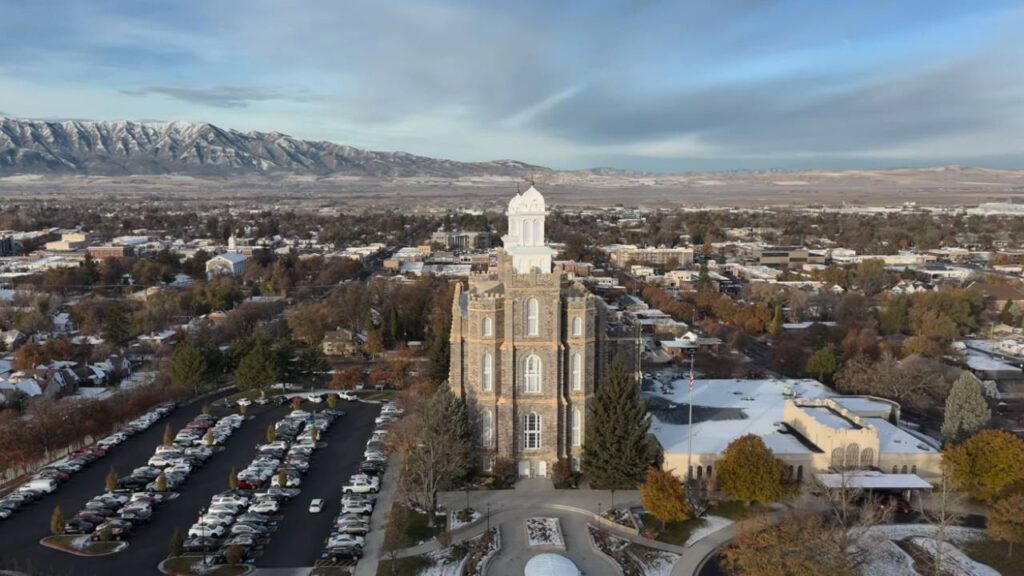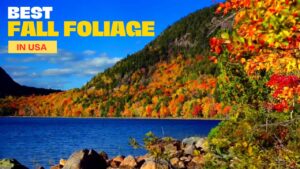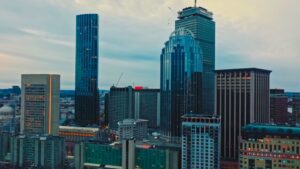Logan Utah Temple is not just a place of worship—it’s a symbol of Utah’s rich pioneer heritage, breathtaking architecture, and serene beauty. A photographer, traveler, couple planning a wedding, or simply an admirer of historic landmarks, this temple offers a unique and inspiring experience. Get to know everything from scheduling photo shoots, pricing information, when to visit, where to shoot nearby, and what else to visit around the area—all with a focus on the user intent to make your visit truly memorable.
If planning to visit the Logan Utah Temple from outside the U.S., knowing how to get a USA visa easily is essential. Apply for a B-2 tourist visa, complete the DS-160 form, prepare your documents, and schedule your interview early for a smooth process.
About Logan Utah Temple
The Logan Utah Temple, located in Cache Valley in northern Utah, stands as one of the oldest temples of The Church of Jesus Christ of Latter-day Saints. Church leaders announced its construction in 1876 and dedicated it in 1884. Early Mormon pioneers built the temple using local quartzite stone, giving the structure its distinct grayish-blue hue. Its impressive Gothic Revival architecture features six striking spires, arched windows, and grand staircases, all perched on a hill that makes the temple visible from many parts of Logan.
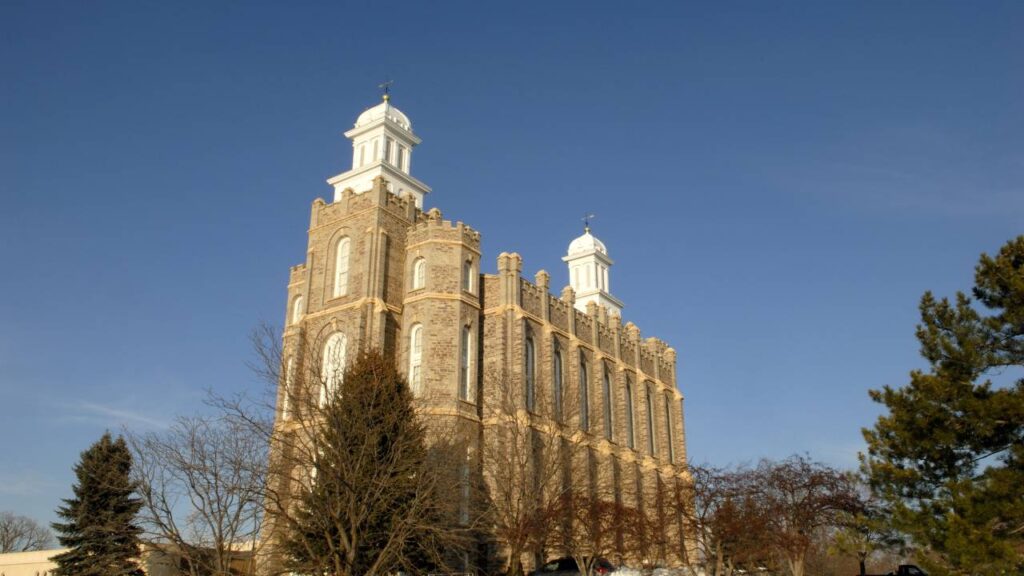
Visitors often marvel at its castle-like appearance and deep historical significance. While the temple’s interior remains reserved for LDS Church members participating in sacred ordinances, the beautifully maintained grounds welcome the public. People frequently stroll through the lush gardens and along peaceful walkways, enjoying the manicured landscape and serene setting. The temple’s majestic presence and scenic surroundings have made it one of the most photographed temples in the western United States.
How to Visit Logan Utah Temple
Find the Logan Utah Temple at 175 N 300 E, Logan, Utah 84321. Reaching the temple is easy—US Highway 89 provides a direct route, and free, ample parking is available near the temple grounds. If you’re traveling from Salt Lake City, plan for a scenic 90-minute drive through Logan Canyon, offering stunning views along the way.
Although the temple’s interior is reserved for LDS Church members, the grounds remain open to the public. You can stroll through the beautifully landscaped gardens, relax on benches, and enjoy the peaceful atmosphere that surrounds the historic site. In spring and fall, vibrant flowers and colorful foliage create a breathtaking backdrop. Informational plaques throughout the grounds highlight the temple’s construction, history, and spiritual purpose, enriching your experience.
To make your visit even more meaningful, start your tour at the Logan Tabernacle, located just a short walk from the temple. There, you can join guided tours, attend musical performances, and dive deeper into the area’s rich Latter-day Saint history. This nearby landmark helps you better understand the religious and cultural significance of the Logan Utah Temple.
How to Schedule a Photo Shoot at Logan Utah Temple
Planning to capture special moments such as engagement photos, bridal portraits, or family pictures on the temple grounds, it’s important to plan accordingly. While no formal permit is required for non-commercial photography, respecting temple rules and etiquette is essential.
For wedding photography, couples often schedule their sealing ceremonies at the temple and immediately take photos afterward. It’s common to see photographers working discreetly around the grounds, capturing moments of joy while maintaining reverence for the sacred environment.
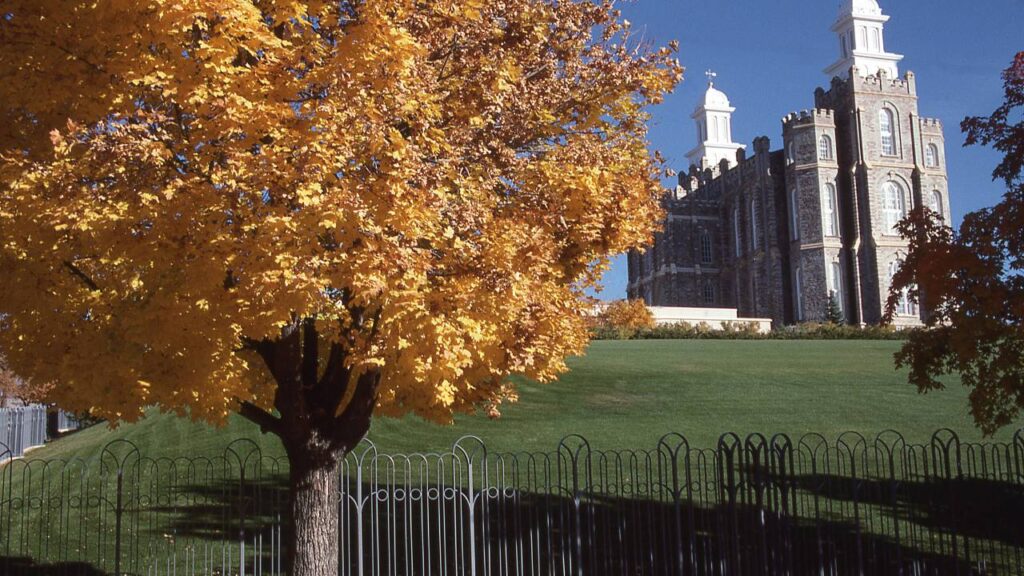
To schedule a photoshoot:
- Contact the temple office in advance at their listed number on the LDS Church website. While staff may not formally approve every shoot, they can offer guidance on the best times and any current restrictions.
- Arrive early, especially during busy wedding seasons like spring and summer, when multiple ceremonies may be taking place in a single day.
- Dress modestly and avoid loud music or disruptive equipment. Drones are generally not allowed on temple property but may be used from a distance if local airspace regulations permit.
- Professional photographers should be aware that using the temple as a backdrop in commercial promotions (like advertisements or paid print work) may require additional permissions.
Many local photographers are familiar with LDS temple protocol and offer packages that include shooting at the Logan Utah Temple.
Best Time to Photograph Logan Utah Temple
Timing is everything when you want to capture the perfect photograph of the Logan Utah Temple. Its elevated hilltop location, elegant spires, and seasonal changes offer a variety of stunning backdrops and lighting conditions throughout the year. A professional photographer or a hobbyist, planning your shoot around the right season and time of day can help you achieve truly breathtaking results.
By Season:
Spring (April–May):
Spring transforms the temple grounds into a floral paradise. Beds of vibrant tulips, pansies, daffodils, and budding trees surround the structure, offering color-rich compositions. Mild weather makes it comfortable for early morning or afternoon sessions. Morning light during spring casts soft shadows and highlights the temple’s stone texture beautifully, giving photos a dreamy and serene atmosphere. It’s also a popular time for wedding shoots and family portraits because of the colorful, lively backdrop.
Summer (June–August):
With long daylight hours, summer allows for extended shooting opportunities, whether you’re aiming for sunrise, mid-morning, or evening. The green lawns, blooming summer flowers, and deep-blue skies create a crisp, vibrant contrast against the gray-blue quartzite stone of the temple. Midday sun can create harsh shadows and glare, which may wash out details. To avoid overexposed shots, aim for early morning or golden hour when the light is warm, gentle, and more flattering for architectural photography.
Fall (September–October):
Autumn may be the most visually stunning time to photograph the Logan Utah Temple. Trees surrounding the grounds explode into hues of orange, red, yellow, and gold, creating a natural frame that perfectly complements the temple’s elegant design. The stone structure stands out brilliantly against the warm-toned foliage, making every angle a postcard-worthy shot. Cooler temperatures also bring clearer skies and consistent soft lighting, perfect for both close-ups and wide shots of the full temple and its surroundings.
Winter (November–February):
In winter, the temple takes on a peaceful, storybook-like quality. Snow blankets the grounds, and icicles often hang from the temple roof and spires, adding intricate detail and quiet beauty to your photos. This season provides a strong contrast between the bright white snow and the temple’s gray stone, resulting in elegant, timeless images. Early morning or post-snowstorm afternoons are especially good for capturing the temple with undisturbed snow and soft, diffused light. Don’t forget to bring proper cold-weather gear if you’re planning a shoot in the snow!
By Time of Day:
Golden Hour (One hour after sunrise or before sunset):
Golden Hour is often considered the best time of day to photograph the temple. In the morning, the eastern sun softly illuminates the front of the temple, casting warm golden hues on its stone surface and creating gentle shadows for depth. In the evening, the setting sun provides a magical backlight, outlining the spires and surrounding trees in a warm glow. This is the ideal time for dramatic, soft-focus images that showcase the temple in its most radiant light.
Twilight or Blue Hour (Just after sunset or before sunrise):
Blue Hour offers a unique atmosphere when the sky turns a deep blue or indigo hue, and the temple lights begin to illuminate. The contrast between the natural cool tones of the sky and the warm golden lighting of the temple creates a striking visual effect. This is a perfect time for long-exposure photography, allowing you to capture the glow of artificial lighting without overexposure. The resulting images often have a serene, reverent feeling that reflects the spiritual atmosphere of the temple grounds.
Night Photography:
When the sky is dark and the temple is fully lit, nighttime photography creates a sense of awe and majesty. The illuminated spires stand tall against the night sky, often reflecting in nearby puddles or snow for artistic compositions. Use a tripod and slow shutter speed to ensure sharpness and reduce noise in your photos. This is a great time to experiment with light trails, reflections, or silhouette photography using the temple as your focal point. Try positioning your camera to capture the star-filled sky above the spires for a dramatic celestial touch.
Logan Utah Temple Prices
The Logan Utah Temple itself does not charge admission or photography fees, as it is a religious site. Visiting the grounds and taking photos is entirely free of charge. Costs may arise depending on the type of photography you’re doing and the services you require.
Photography-Related Costs:
- Local Photographer Rates: $200–$600 for portrait or engagement sessions around the temple.
- Wedding Photography Packages: $1,000–$3,000, which typically include full-day coverage, edited albums, and digital files.
- Photo Equipment Rentals: If you’re traveling from out of state, some photographers rent lighting kits, lenses, and stands for $50–$150 per session.
Drone usage may incur additional costs if you’re hiring a certified drone operator and need permits for commercial use near city zones.
Logan Utah Temple Tourist Attractions
The area surrounding the Logan Utah Temple is rich in culture, history, and natural beauty. Whether you’re visiting for a day or planning a weekend getaway, Cache Valley offers a wide variety of attractions that appeal to history buffs, families, nature enthusiasts, and curious travelers alike. Below are some top places to visit while you’re in the area:
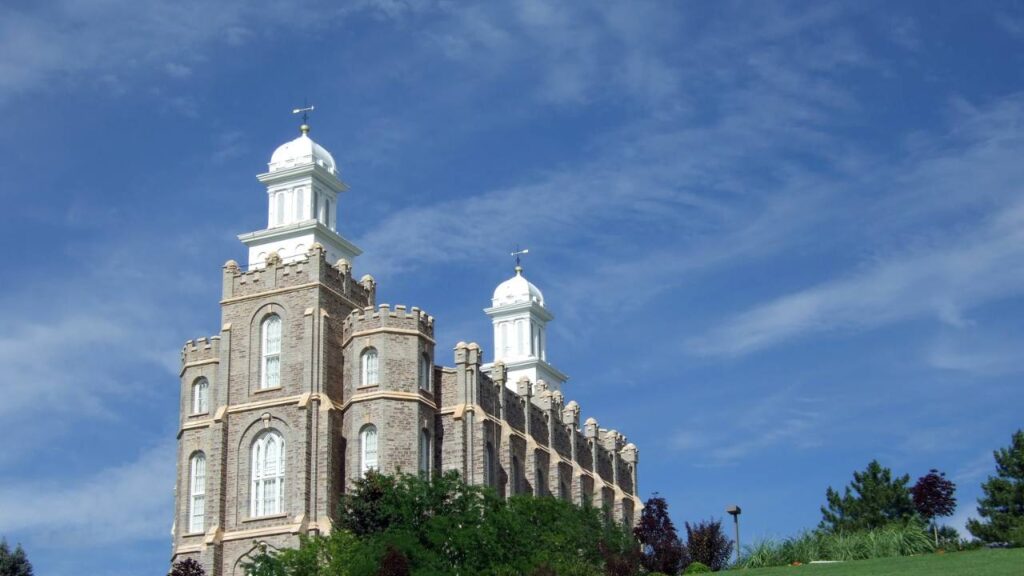
Logan Tabernacle
Located just a few blocks from the temple, the Logan Tabernacle is a striking 19th-century structure built from local stone. It features magnificent woodwork, stained glass windows, and a large pipe organ that still hosts free community concerts. Throughout the year, the Tabernacle serves as a hub for historical exhibits, musical performances, lectures, and local festivals. During the summer months, you can enjoy the noon concert series, featuring talented musicians from across Utah. Guided tours are often available and provide a deeper understanding of Logan’s pioneer roots and the early days of the LDS community.
Cache Valley Visitors Center
New to the area, stop by the Cache Valley Visitors Center, located in downtown Logan. The center is your go-to spot for maps, brochures, and travel guides, and the friendly staff can help you plan an itinerary tailored to your interests. Inside, you’ll find interactive displays and exhibits that highlight the valley’s rich agricultural history, pioneer heritage, and local industries. It’s also a great place to learn about seasonal activities, including nearby hiking trails, scenic drives, and community events. The Visitors Center serves as a perfect launching point for exploring the broader Cache Valley region.
American West Heritage Center
Step back in time at the American West Heritage Center, a 160-acre living history attraction located just south of Logan. This educational site brings the pioneer, mountain man, and early Western eras to life with immersive exhibits and hands-on activities. You can tour authentic 1800s pioneer cabins, churn butter, try your hand at blacksmithing, or even participate in old-fashioned games. Families especially enjoy the pony rides, farm animals, and seasonal festivals like Baby Animal Days in spring or Fall Harvest Festival. The center also includes historical reenactments, antique farm equipment, and hiking trails, making it a full-day adventure for all ages.
Zootah at Willow Park
For a fun, family-friendly experience, visit Zootah at Willow Park, a small but charming zoo nestled in the heart of Logan. This community-supported zoo features a variety of native and exotic animals, including lemurs, deer, peacocks, porcupines, and reptiles. Kids love the interactive exhibits, petting zoo, and scheduled animal feedings where they can get up close and personal with the animals. The surrounding Willow Park offers open green spaces, shaded picnic areas, walking paths, a playground, and even a pond for bird-watching. It’s an ideal stop for families looking to unwind and enjoy a peaceful afternoon outdoors.
Places to Take Pictures in Logan Utah
Aside from the iconic Logan Utah Temple, the city offers several nearby photo-worthy spots—each just 5–15 minutes away. Whether you’re capturing nature, history, or urban charm, these locations add beautiful variety to your photo collection:
Green Canyon
Perfect for scenic hikes, fall foliage, and family portraits. Its lush trails and vibrant colors make it a favorite in autumn.
USU’s Old Main Building
This historic tower at Utah State University is popular for graduation and engagement photos. The building is surrounded by seasonal flowers, green lawns, and mountain views.
First Dam & Second Dam
These peaceful lakeside parks are ideal for candid nature shots, romantic photos, and wildlife moments. Great lighting during sunrise and golden hour.
Downtown Logan Murals & Alleys
Capture bold, urban-style photos with colorful murals, brick backdrops, and artistic alleyways. A creative spot for portraits and social media content.
What to Do Near Logan Utah Temple
After exploring or photographing the Logan Utah Temple, don’t miss out on the vibrant mix of local culture, dining, shopping, and natural beauty nearby. Whether you’re traveling solo, with your partner, or as a family, there are plenty of enjoyable experiences just minutes from the temple.
Grab Local Cuisine
Logan’s food scene offers delicious, local flavors in unique settings. Herm’s Inn, located in a beautifully restored 1900s building, is a must-visit for gourmet breakfasts and brunches—try their stuffed French toast or huevos rancheros. For a nostalgic bite, stop by The Bluebird Restaurant, a vintage diner that’s been serving customers since 1914. Its classic soda fountain, candy counter, and antique decor offer a taste of Logan’s history along with hearty American dishes. Both spots are local favorites and ideal for a relaxing meal after your temple visit.
Shop Local
Downtown Logan is full of charming shops and boutiques perfect for browsing and buying. You’ll find antique stores, handmade craft shops, quaint bookstores, and local artisan goods that reflect the creative spirit of Cache Valley. Whether you’re hunting for vintage finds, souvenirs, or unique gifts, the downtown area is walkable and welcoming. Don’t miss local gems like The Book Table for music, books, and games, or Gift House Florist for beautiful, locally made décor.
Attend a Show
Immerse yourself in the local arts scene by attending a performance at the Ellen Eccles Theatre, part of the Cache Valley Center for the Arts. This beautifully restored historic theater regularly hosts Broadway-style musicals, concerts, ballet performances, and community theater. With its grand architecture and professional acoustics, it offers an intimate yet elegant experience for art lovers. Check their schedule online or stop by the box office to see what’s showing during your visit.
Explore Nature
Craving fresh air and scenic views, head east on the Logan Canyon Scenic Byway—a breathtaking drive that leads all the way to Bear Lake. Along the way, you can stop at picnic areas, campgrounds, and waterfalls, such as Tony Grove Lake or Wind Caves Trail. The route offers dramatic canyon views, alpine forests, and spots for hiking, fishing, and wildlife photography. It’s a perfect extension of your trip, especially for outdoor enthusiasts or couples looking for a romantic escape into nature.
So grab your camera, plan your day, and don’t miss the chance to see one of Utah’s most beloved landmarks—the magnificent Logan Utah Temple.
FAQs
1. What is the Logan Utah Temple?
The Logan Utah Temple is a sacred religious building of The Church of Jesus Christ of Latter-day Saints. It was dedicated in 1884 and is the second temple built in Utah. Known for its Gothic Revival architecture and stunning hilltop location, it serves as a place for sacred ordinances such as marriage and spiritual worship for LDS members.
2. Where is the Logan Utah Temple located?
The temple is located at 175 North 300 East, Logan, Utah 84321, in the heart of Cache Valley. It’s easily accessible from downtown Logan and sits atop a prominent hill, offering panoramic views of the city and surrounding mountains.
3. Can anyone visit the Logan Utah Temple?
While only members of the LDS Church in good standing can enter the interior of the temple for religious ordinances, the exterior grounds are open to the public. Visitors are welcome to walk the beautifully landscaped grounds, take photos, and enjoy the peaceful environment.
4. Is there a visitor center at the Logan Utah Temple?
No, the Logan Utah Temple does not currently have an official visitor center. Nearby attractions such as the Logan Tabernacle often provide historical context and community events. Online resources and LDS Church websites also offer virtual tours and information.
5. How can I schedule a photo shoot at the Logan Utah Temple?
To schedule a photo shoot, contact the temple office in advance to understand any current policies. While formal permits are not typically required for exterior photography, photographers should remain respectful of temple patrons, avoid blocking walkways, and maintain a peaceful atmosphere. Wedding and engagement photos are commonly taken on the grounds.
6. What is the best time of year to photograph the Logan Utah Temple?
The best seasons for photography are spring (with blooming flowers), fall (with vibrant foliage), and winter (with snow-covered elegance). Golden hour—right after sunrise or before sunset—provides the most flattering lighting. Evening shots are also beautiful when the temple is illuminated.
7. Is there any fee to enter or photograph the Logan Utah Temple?
No. There is no fee to visit the temple grounds or take photos for personal use. If you hire a professional photographer, costs will vary based on the session type and duration. Commercial photography should be discussed with temple staff in advance.
8. What are some nearby attractions to the Logan Utah Temple?
Logan offers several attractions near the temple, including:
- Logan Tabernacle
- Utah State University campus
- Ellen Eccles Theatre
- American West Heritage Center
- Logan Canyon Scenic Drive
These sites are perfect for extending your visit and capturing additional scenic or historical photos.
9. Are there any rules or dress codes for visitors to the temple grounds?
Visitors are encouraged to dress modestly and respect the sacred nature of the site. Loud music, disruptive behavior, and commercial filming without approval are discouraged. The temple grounds are meant to be peaceful and reverent.
10. Can I use a drone to photograph the Logan Utah Temple?
Drone usage is generally restricted around the temple grounds due to safety, privacy, and local regulations. If you plan to use a drone, you must comply with FAA guidelines and contact temple staff or city officials to confirm whether drone flights are permitted from a safe distance.
